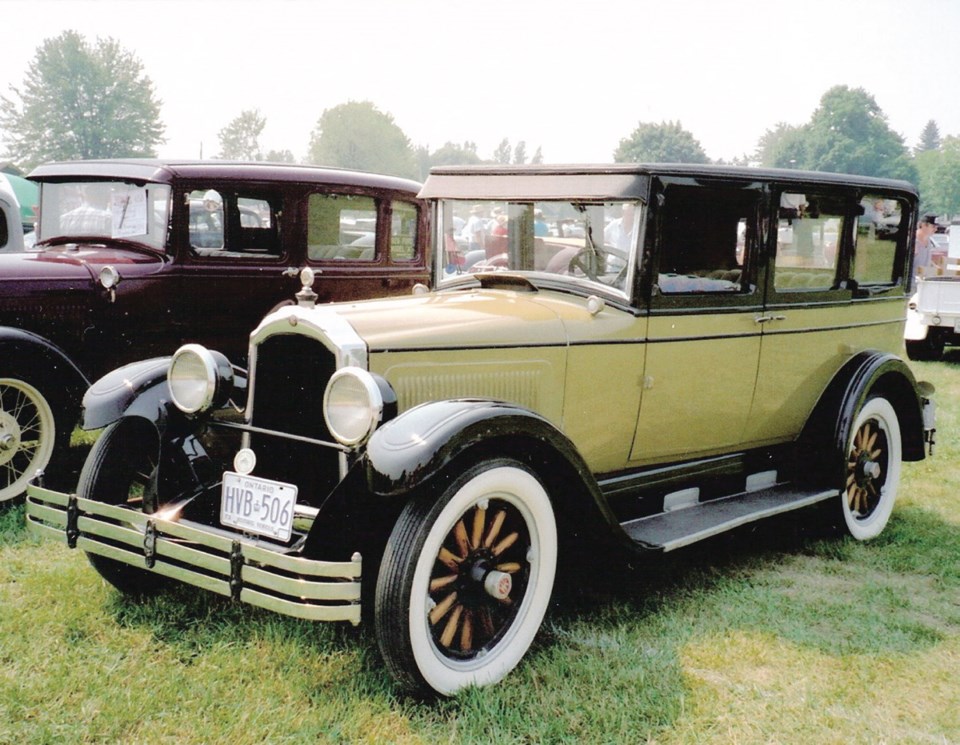The Willys-Knight was a well-regarded medium-priced car built by Willys-Overland of Toledo, Ohio, and Toronto from 1914 to 1932. While nicely appointed and comfortable, it is best remembered for its ultra-quiet Knight sleeve-valve engine. Although sleeve valves were also used by several U.S. and European luxury marques and Canada’s Russell car, it was Willys-Knight that really popularized them.
Early in the 20th century, American inventor Charles Yale Knight became dissatisfied with the poppet valves in his personal cars. They were opened by a camshaft and pushrods and closed by springs. Besides being noisy, they were prone to burning around the edges, which damaged the seal and allowed combustion-gas leakage.
Knight was familiar with steam engine sliding valves, so he thought they might work in an internal combustion engine. He adapted the quiet sleeve valve to gasoline engines and received a patent for the Knight sleeve valve engine in Britain in 1908 and the United States in 1910.
Knight’s design used two concentric cast-iron sleeves, or tubes, positioned between the pistons and cylinder block with the pistons sliding on the inner sleeves. The sleeves were reciprocated by short connecting rods operated by a crankshaft-rotated eccentric shaft much like a camshaft.
The sleeves were about three millimetres thick, with a stroke of about 25 mm. Slots at the tops of the sleeves lined up with intake and exhaust ports to flow gases in and out of the cylinders. Although pistons and sleeves sliding up and down all at once sounds quite complicated, the mechanism worked very well.
Sleeve valves had several advantages. Their fully lubricated sliding motions made them extremely quiet compared with the clattering impact of poppet valves. Positive opening and closing eliminated valve bounce, and combustion chambers could be the ideal hemispherical shape with a central spark plug. No valve adjustments or decarbonizing were required. In fact, a little carbon accumulation made a more efficient seal.
Disadvantages were that sleeve valves were more expensive to manufacture and were subject to higher oil consumption. The added reciprocating mass and extra friction made the engine harder to turn over for starting in cold weather.
Finding little enthusiasm for sleeve valves in the American auto industry, Knight headed for Europe. To gain prestige, he approached luxury-car makers, where he reasoned his quieter sleeve valves would be more highly valued.
By 1913, Knight clients included Daimler of England (in its “Double Six” V-12), Panhard et Levassor, Peugeot and Mors of France, Mercedes of Germany and Minerva of Belgium. France pursued the development of the Knight engine most vigorously.
Knight returned to America to try again, this time with more success. Among others, the Stearns Co. of Cleveland, Stoddard-Dayton of Dayton, Ohio, Columbia of Hartford, Connecticut, Russell of Toronto and Edwards of New York contracted for Knight licences.
John North Willys and the Knight engine crossed paths in 1913 when Willys-Overland purchased the Edwards Motor Co. With the purchase, they got the Edwards sleeve-valve licence.
Armed with the Edwards Knight licence, John Willys plunged into sleeve valves with his customary enthusiasm, introducing the new four-cylinder sleeve-valve Willys-Knight in 1914.
The Willys-Knight would also be built in Toronto for Canadian sales, and for export. With the Willys-Knight, W-O brought sleeve-valve silence into the affordable price range, and would ultimately produce more Knight-engined cars than all other Knight users combined.
Amid a flurry of models, the Willys-Knight almost got lost in the W-O offerings, but by 1919, the company had consolidated to three lines: the low-priced Overland, the medium-priced Willys-Knight and a new Willys Six that was under development.
Many buyers liked the ultra-quiet operation of the sleeve-valve engine, and Willys-Knight became a successful mid-priced car with annual sales as high as 50,000. The four was soon joined by the sleeve-valve six, and even in 1917 by a V-8 for a three-year stay. Willys-Knight went to six cylinders exclusively in 1926.
Willys-Overland did well through the 1920s, but in the early 1930s, like so many others, it was hurt by the Depression. Although W-O would make it through the 1930s, the Willys-Knight was allowed to die in 1932.
Advances in metallurgy and lubrication and the development of hydraulic valve lifters gradually made the poppet valve quiet and reliable. Sleeve valves lost their advantage, and although they would continue to be used for several years, especially in aircraft applications, where the Burt-McCollum single-sleeve design was favoured (James McCollum was a University of Toronto engineering professor), they disappeared from cars.
The Willys-Knight and other Knight engined cars are fondly remembered as a quiet presence among the clatter.



